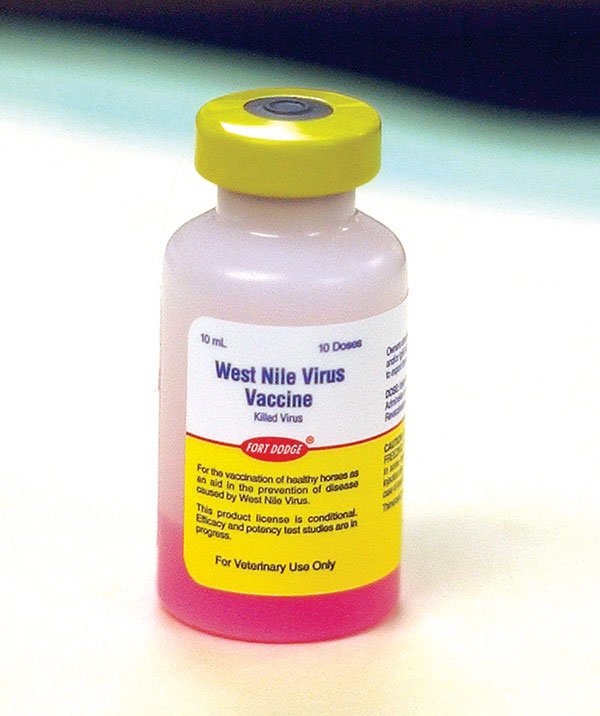South County residents are being asked to help eliminate
conditions around their homes that could harbor mosquitos and
possibly contribute to the spread of West Nile virus. The disease
is expected to reach this area in the coming months.
By Lori Stuenkel
GILROY – South County residents are being asked to help eliminate conditions around their homes that could harbor mosquitos and possibly contribute to the spread of West Nile virus. The disease is expected to reach this area in the coming months.
The 2004 West Nile virus season has already proven deadly to birds and harmful to horses and humans across the country and in the southern part of this state. Although no case of West Nile virus has ever been reported in Northern California, county officials say it’s basically a matter of time.
“We really believe it will be this summer,” said Kriss Costa, spokeswoman for the county’s Vector Control District, which is responsible for abating mosquitos and keeping the virus at bay. “When exactly, we’re not sure right now. Southern California is being hit very heavy,and it’s very likely that it could be up here soon.”
The 2004 season of the West Nile virus is expected to be the most severe since it was discovered in the U.S. in 1999, according to the Trust for America’s Health. And California is expected to be hit particularly hard – 16 human cases of the virus have already been detected in the state, all in the south – although Arizon has had 58 cases, two deaths.
“We want to be ready, and we want the public to really check their backyards because in Southern California, that’s what they’re finding out: The majority of problems are in residential areas and in standing water in people’s own backyards,” Costa said.
West Nile virus, although it originates in birds, is a mosquito-borne virus. Residents should eliminate any standing water around their homes to prevent the development of mosquitos and the spread of the virus.
“We ask that people completely change any standing water once a week,” Costa said. “And to realize that a teaspoon of water can develop hundreds of mosquitos.”
The Centers for Disease Control reports that most people who are infected with the virus will not have any type of illness and fewer than 1 percent will become seriously ill or die.
Perhaps of particular concern to South County residents is that the virus kills one in three horses, says Linda Seals at Tri-County Veterinary Hospital in Gilroy. Since the beginning of the year, the hospital has vaccinated 1,000 horses against the virus. There is no vaccine for humans or birds.
“We weren’t sure when this disease was going to hit California – if it was last summer or this summer – so a lot of clients have been vaccinating over a year and a half,” she said.
The office puts out a newsletter to all clients twice a year with information about the virus.
“Most of the horse owners in our area are very up-to-date and are on top of medical news,” Seals said.
San Martin resident and horse owner Robert Buchner said his horses are current on their vaccinations, which must be re-administered every six months.
“We’ve taken the precautions that we can, and we just cross our fingers,” he said. “It’s not something that’s going to keep me from riding my horses, keep me from taking them out or keep me from going out myself, because humans can catch it.”
Birds kept for education purposes at the Wildlife Education and Rehabilitation Center receive the equestrian vaccination, as well, although Sue Howell, the center’s executive director, says it breaks her heart that all animals cannot be protected.
“We cannot afford to vaccinate all animals, it just really is kind of tearing us apart,” Howell said. “But when you have limited funds, you have to budget appropriately.
“We’ve heard the heartbreaking stories from different people at rehabilitation centers in other states of whole species getting wiped out; I don’t think people in California realize the scope of the affect it’s had on wildlife, especially the bird population.”
When the virus does come to the area, Howell said, she expects the center will be inundated with calls, but people will be referred to Vector Control’s West Nile virus hotline.
If an animal is caught in the first stages of the virus, there is a chance it can be saved, but it most often proves fatal, she said.
Santa Clara County has had mosquito abatement since 1918.
“Doing disease surveys and mosquito surveys and treating areas for mosquitos proactively is not new, so we’ve been doing this for a long time,” Costa said. “We do have technicians throughout the county, including South County, who check our known sources.”
Vector Control technicians check “high threat” areas that develop mosquitos weekly, she said.
“They’re constantly out there looking at them,” she said. “We also have stepped up our surveillance of adult mosquitos.”
The number of traps set up throughout the county to test adult mosquitos – which spread the virus from birds to horses or humans – more than doubled this year.
Also, four sentinel chicken flocks, posted throughout the county to serve as an indication of the virus’ arrival – are checked twice a week. The virus is likely to show up in wild birds first, though, Costa said.
“We’re also encouraging residents to call us if they know of pools or spas or water held somewhere that could possibly be developing mosquitos so we can check into it before the virus gets here,” she said. “It might be an area that’s been overlooked or a new area that we don’t know about and we want to take care of that before the virus gets up here.”
The agency also asks county residents to report birds that have been dead for less than 24 hours. A 24-hour hotline offers information about the virus and takes reports of dead birds.
The virus has spread to 46 states.
Last year, West Nile virus infected nearly 10,000 Americans, killing 264. Three cases were found in California, although none were fatal.
Symptoms of West Nile virus include fever, headache, tiredness, body aches and skin rash. Rarely, West Nile will cause inflammation of the brain or its surrounding membrane, causing a high fever and severe headache. There is no specific treatment for the virus, other than supportive care.
Officials at Saint Louise Regional Hospital say they are educating hospital staff on what to do should someone come in with what appear to be West Nile virus symptoms and have posters with information about the virus throughout the hospital.
“We’re very aware of the cases down south, and we’ve done everything we think is appropriate here to educate our staff and physicians about West Nile virus and stay on top of it,” said Steve Sharrer, vice president of human resources.
Sharrer said he has not received any inquiries about West Nile virus.
“If somebody feels like they have those types of symptoms, they should get a hold of their primary care-giver … right away,” he said. “Obviously, anybody can, if they feel like they need to, come to our emergency department here if they feel they need to do that.”















